#camera angles
Explore tagged Tumblr posts
Text
Sulemio/Mioletta is just so fun to look back on.
I was rewatching GWitch episode 11, and I noticed something.
When Suletta is talking to her mother in the bathroom, she's shown upside down and spinning in place, like she's lost in space.



Then Miorine knocks, and the camera WHIPS around to fixed upright. It stays there for the rest of the episode...



...except at the point where Miorine calls Suletta stupid ("Baka!"), and Suletta's insecurities resurface as she and the camera starts spinning helplessly again and being shown without an upright orientation.




The spin stops and upright fixed upright camera positioning returns again when Miorine asks her what's wrong (in a brusque, but not insulting manner).



And then, as Miorine pours her heart out to Suletta, the two of them and the camera stay fixed upright for the rest of the scene.



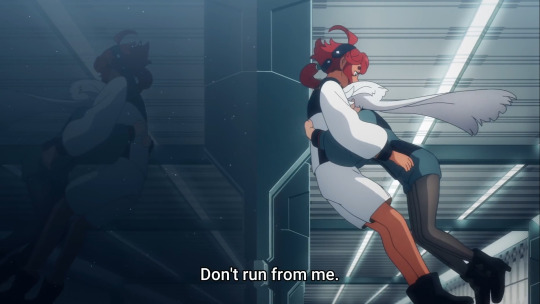

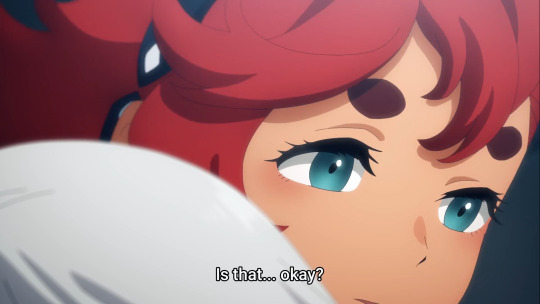




#Sulemio#Mioletta#Suletta Mercury#Miorine Rembran#WLW#Gundam#Gundam Witch From Mercury#Gundam The Witch From Mercury#Witch From Mercury#The Witch From Mercury#G Witch#Camera angles#environmental storytelling
151 notes
·
View notes
Text

#charliex#charlieevans#Charlie#star trek#star trek tos#tos#st tos#the original series#star trek the original series#transmanshranposting#anime#camera angles#anime psycho camera angle#about to lose my shit
40 notes
·
View notes
Text

Capturing multiple angles
#abunaday#daily#bun#bunny#doodle#photo in photo#photography#capture the moment#camera angles#一日一兔#拍攝#攝影#照片中照片
20 notes
·
View notes
Text
so camera angles in F1 right
In case you don’t know this about me, I’m a mild film/cam passionista, and I have opinions sometimes okay.
F1’s main problem with cameras (imo) is that they really want to “keep people in the action” which they’ve done by keeping cars in the direct center of your screen all the times, and putting cameras at sections with wider angles of view. This is nice, because the sort of limited camera angles from before made it occasionally difficult to keep track of race action.
HOWEVER
They sort of swapped to this wide, central shot style, instead of implementing it. One thing F1 did really well was letting you feel and understand the power of these cars, even through a TV screen. The camera whipped around to follow Raikkonen absolutely sending his car through Eau Rouge (absolute madlad btw) or the Schumacher brothers chasing each other through that wide right hander in Silverstone. The cars felt fast, they felt close, and a lot of that was due to the very stationary cameras relatively close to the track, and the fact that the operators didn’t seem to feel the need to adjust the zoom angle every microsecond to keep the car perfectly centered on your TVs screen. Like sure, I couldn’t see all the pretty sponsor logos, or maybe I didn’t always catch the honestly fascinating front or rear wings of the 2000s (next up on the fact list?), but that was part of the magic. The cars were screaming past so quickly you could hardly keep them in frame at all.
This started going away in the 2010s. By 2020 it was nearly gone completely, and watching races just felt sort of stagnant: no matter how fast I knew Hamilton and Vettel were throwing themselves through every corner, they always seemed to be moving at the same speed.
But things are starting to change.
New cams like the ones on front wings, on/inside driver helmets, and the saving grace of the mid-season camera development upgrades (lol), the gyro cam. These are SO COOL, and the gyro cam in particular feels FAST, I think because the mildly warped field of view makes the motion blur heavier while still keeping that crisp video quality we’ve come to expect from modern cameras, combined with the defining feature of it rolling with the horizon as the car experienced angle changes itself.
Also just angles in general, like the ones at the Monaco pool chicane and tunnel, and some of the ones at Singapore this year, they just bring back that close-to-the-track action.
Interestingly, if you go back and watch recordings from the 1970s and 80s, you’ll notice they actually had some of these. The onboard cameras back then were genuinely exciting, and I watch them all the time. I’d recommend that any F1 fan do that, even if just to see the evolution of driving styles and cars.
I think F1 is finally listening to fans saying they liked the more stationary cameras, the wild onboards, stuff like that. You can feel the speed of the cars like back in the 2000’s and early 2010’s.
#f1 2024#f1#2000s f1#kimi raikkonen#lewis hamilton#sebastian vettel#camera#videography#camera angles#the ferret yaps#opinion#bitch i might wing#1980s f1#1970s f1
15 notes
·
View notes
Text
#art#sneakers#luxury#camera work#incredible#@bostonceltics#amazing work#camera angles#video work#videography#drone photography#drone footage#nba#nba in season#chicago bulls#nba basketball#basketball#nbaedit#nba eastern conference#Boston Celtics#nike#jordan#adidas#foryoupage#foryou#tumblr fyp#fypツ#fypシ#fyp#trending
40 notes
·
View notes
Text
Favourite wide shots from Ep9:
Emotional support from boyfriend
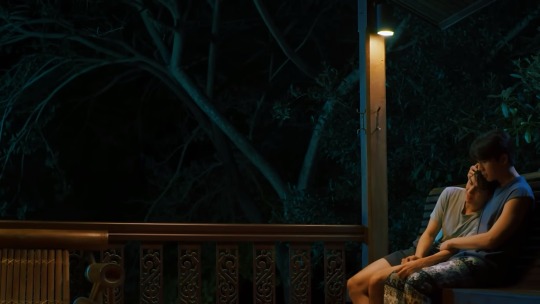
Father and son’s bonding

The mini adventure to explore their newfound world
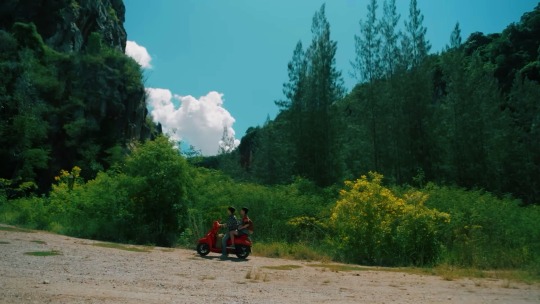
The last image (imaginary)

#last twilight#last twilight the series#last twilight series#last twilight series episode 9#mhokday#film edit#wide shots#full shots#long shots#camera angles
28 notes
·
View notes
Text




Sainz car from high angle, yay or nay? 😆
10 notes
·
View notes
Text


plot twist: angel is elsa
#hazbin hotel#hazbin#hazbin hotel angel dust#hazbin hotel angel#hazbin hotel addict music video#hazbin hotel addict#frozen elsa#frozen 2#frozen 2 into the unknown#into the unknown#hazbin hotel club 666#camera angles#I'm sorry it's the media student in me
47 notes
·
View notes
Text
the camera angles post (fact/opinion 3)
Bucket!
you did encourage the camera angles, soooo
this is more opinion but there are some facts in here if you count the mild history of cameras in F1 as facts.
F1’s main problem with cameras (imo) is that they really want to “keep people in the action” which they’ve done by keeping cars in the direct center of your screen all the times, and putting cameras at sections with wider angles of view. This is nice, because the sort of limited camera angles from before made it occasionally difficult to keep track of race action.
HOWEVER
They sort of swapped to this wide, central shot style, instead of implementing it. One thing F1 did really well was letting you feel and understand the power of these cars, even through a TV screen. The camera whipped around to follow Raikkonen absolutely sending his car through Eau Rouge (absolute madlad btw) or the Schumacher brothers chasing each other through that wide right hander in Silverstone. The cars felt fast, they felt close, and a lot of that was due to the very stationary cameras relatively close to the track, and the fact that the operators didn’t seem to feel the need to adjust the zoom angle every microsecond to keep the car perfectly centered on your TVs screen. Like sure, I couldn’t see all the pretty sponsor logos, or maybe I didn’t always catch the honestly fascinating front or rear wings of the 2000s (next up on the fact list?), but that was part of the magic. The cars were screaming past so quickly you could hardly keep them in frame at all.
This started going away in the 2010s. By 2020 it was nearly gone completely, and watching races just felt sort of stagnant: no matter how fast I knew Hamilton and Vettel were throwing themselves through every corner, they always seemed to be moving at the same speed.
But things are starting to change.
New cams like the ones on front wings, on/inside driver helmets, and the saving grace of the mid-season camera development upgrades (lol), the gyro cam. These are SO COOL, and the gyro cam in particular feels FAST, I think because the mildly warped field of view makes the motion blur heavier while still keeping that crisp video quality we’ve come to expect from modern cameras, combined with the defining feature of it rolling with the horizon as the car experienced angle changes itself.
Also just angles in general, like the ones at the Monaco pool chicane and tunnel, and some of the ones at Singapore this year, they just bring back that close-to-the-track action.
Interestingly, if you go back and watch recordings from the 1970s and 80s, you’ll notice they actually had some of these. The onboard cameras back then were genuinely exciting, and I watch them all the time. I’d recommend that any F1 fan do that, even if just to see the evolution of driving styles and cars.
I think F1 is finally listening to fans saying they liked the more stationary cameras, the wild onboards, stuff like that. You can feel the speed of the cars like back in the 2000’s and early 2010’s.
mildly considering starting a bucket blog ngl but also the anon-bucket-question is fun what do you think
<><><><><>

#camera angles#formula 1#formula one#2000s f1#2010s f1#2020s f1#1970s f1#1980s f1#they’re just mentioned though#bucket !!
6 notes
·
View notes
Text
7 notes
·
View notes
Text
Taking that videography course has to be the best thing I've ever done. Even though I'm learning live action camera techniques, I can use the same ideas for animation, and its completely changed how I watch anime now.
https://www.sakugabooru.com/post/show/241272
Take this cut from Freiren from like two episodes ago. It starts out as a close-up shot, super standard. But it dolly-zooms back to both show that its actually a PoV shot, and sell the impact of the attack. What an incredible little sequence that really shows how much emphasis is placed on cinematography in anime.
#editing#videography#cinematography#anime#freiren: beyond journey's end#camera angles#camera techniques#animation
14 notes
·
View notes
Text
Movie Camera Shots

Wide shot

Medium shot

Close up shot
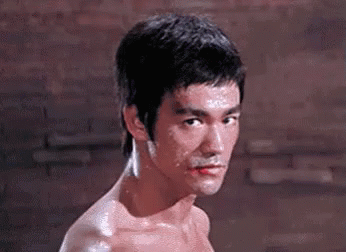
Camera zoom shot
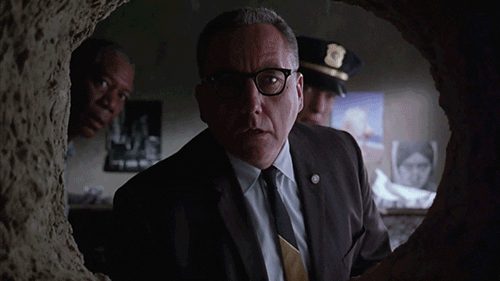
Dolly in shot
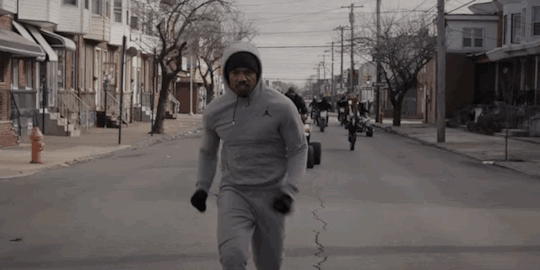
Tracking shot
camera shots in cinema
#camera shots#camera angles#wide shot#medium shot#close up shot#zoom shot#dolly shot#tracking shot#filmmaking tips#cinematography#filmmaking techniques#filmmakers#movies#filmmaker#filmmaking#inglourious basterds#iron man#the good the bad and the ugly#return of the dragon#creed
13 notes
·
View notes
Text
Week 3 - Introduction to Camera
What is a Camera?
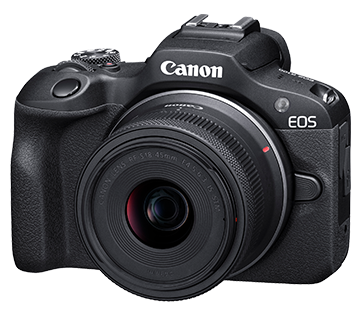
A camera is an instrument used to capture and store images and videos, either digitally via an electronic image sensor, or chemically via a light-sensitive material such as photographic film.

Parts of Camera
Viewfinder - The viewfinder is one of the most important parts of a camera. It is a rectangular-shaped part at the back of your camera that lets you see and frame your subject.
Pentaprism - The pentaprism is a mirror placed at a 45-degree angle behind the camera lens. The mirror projects the light captured from the lens to the viewfinder.
Built-in Flash - A built-in flash is the part of the camera’s anatomy that produces a burst of light when triggered. It has a fixed position on the front or top of the camera to allow it to illuminate the subject. The built-in flash fires only when the camera takes a picture.
Flash Button - The flash button is present on cameras with a built-in pop-up flash. Its main functionality is to force the flash to open before triggered.
Lens Mount - A lens mount is the mechanical fitting that allows the lens to attach to the camera.
Lens Release Button - The lens release button unlocks the lens mount and allows you to detach the lens.
Mode Dial - A mode dial is one of the most used parts of the camera. It is a small cogwheel situated on the top-right of the camera that switches between the camera’s modes.
Focusing Screen - A camera’s focusing screen is the glass surface on which the camera’s mirror projects the image. The focusing screen helps in achieving various focus effects such as sharp and high-contrast shots.
Condenser Lens - A condenser lens has two matching convex lenses. This part uses a simple method for correcting color fringing or aberration that is a common problem encountered when using traditional camera lenses.
Digital Sensor - The digital sensor of a camera is one of its most delicate parts. This sensor captures the light coming from the lens to create an image.
Grip - The grip is the right side of a camera, which has a special curved design to allow you to comfortably handhold the camera. It usually provides space to place your fingers and securely hold the camera. The grip usually has a different texture than the rest of the camera.
Shutter - The shutter is an opaque piece of metal or plastic that controls the amount of light that reaches the camera sensor.
Display - The camera display shows the user helpful information about the photos and the camera. Here you will see the different camera settings you can tweak to alter your exposure, ISO, shutter speed, and more.
Shutter Button - The shutter button is one of the most iconic parts of a camera. The button tells the camera to release the shutter and take a picture.
Aperture - Aperture is one of the three pillars of determining the exposure of your photographs. Additionally, aperture is the opening in your lens through which light passes through. This part has small, thin blades that shrink or expand depending on how much light you want in your exposure.
ISO - ISO refers to the camera sensor’s sensitivity to light.
Memory Card Slot - The memory card slot is where the camera’s memory card is inserted. The memory card stores all the photographs taken by the camera.
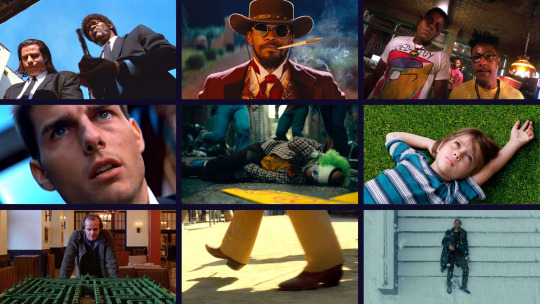
Camera Angles
High-Angle - A high-angle shot is a cinematography technique where the camera points down on the subject from above. This type of shot is used to make the subject or object below seem vulnerable, powerless, or weak.
Low-Angle - A low-angle shot is when the camera is positioned low on the vertical axis, below the level of the eyeline, and looks up at an object or subject above. This camera angle evokes a psychological effect by making the subject above, which the camera is angled at, look strong and powerful.
Over the Shoulder - The over the shoulder shot, is most commonly used in film when two or more characters are talking to each other in conversation. This type of shot is used to establish eyeline of where each character in the scene is looking, and is most commonly framed through a medium or close-up shot.
Bird’s Eye - The bird’s eye view shot, or an aerial view shot, is when the camera is located up above, overhead, capturing the action going on below. In today’s day and age, these types of shots are most commonly captured with a drone in order to be able to get the full view of what is happening down below.
Dutch Angle/Tilt - The Dutch angle/tilt is more of a stylistic approach to cinematography. In order to execute this, you must tilt your camera to one side, which results in a frame that is not level. This type of camera angle is used mostly to create a dramatic effect within a film and can evoke a series of different emotions. The Dutch angle can heighten psychological distress and tension, which in turn, creates a cinematic environment that creates suspense and a sense of thrill.
1 note
·
View note
Text
Cinematic Camera Shots and Angles
Mastering Cinematic Shots: Elevate Your Visual Storytelling Cinematic camera shots and angles are the backbone of powerful visual storytelling, shaping the audience’s perception and emotional connection to a scene. From the intimacy of a close-up to the grandeur of a wide shot, every choice influences mood and narrative impact. Angles like the low-angle shot add dominance, while a high-angle…
0 notes
Text
Story board 🤓🤓


Lovely storyboard sketched out by ella, showing how we wanted to lay it out. I made some tweaks in writing for the sort of camera angles we were looking for instead of it all being middle shot and being the same frame just for more regular flow.


Not the best writing out for directions of the camera but the best i could do just to make it not all the same frames.
0 notes
Text
ON SET:
Lighting: [setting up a diffuser panel directly in front of the camera before they put it where it’s supposed to be]
A-Camera: You’re in the shot
#filmmaking#lighting#sound#actress#workies#love#film lovers#on set#feral#funny#chewing at the bars of my enclosure#apple box#camera#camera man#camera angles#in the shot#film shots#actor#acting#union#art#digital artist#aaaaah#quotes#quoteoftheday#life#filmmakers on tumblr#small artist#it’s fine#its 4 in the morning
1 note
·
View note